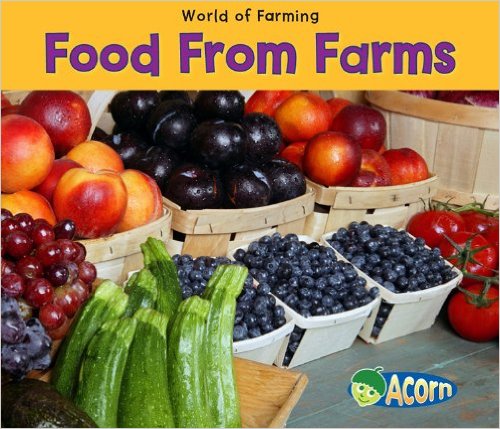Fruit and Vegetable Bingo
Students recognize the names of different fruits and vegetables and describe why they are important.
Background
Lesson Activities
Recommended Companion Resources
Credits
Author
Original Author Unknown, Adapted by Michele Reedy | Utah Agriculture in the Classroom and National Agriculture in the Classroom Organization (NAITCO)
Acknowledgements
Activity 1 provided by Utah Agriculture in the Classroom.
Sources
- http://www.farmtoschool.org/about/staff
- http://www.cfaitc.org/factsheets/pdf/factsheets.pdf
- http://www.fns.usda.gov/nslp/nslp-material-fact-sheets-vegetables-fruits
Standards
Indiana Content Area Standards
-
English Language Arts- Reading Comprehension
Learning Outcome: Students comprehend grade-level text, including fiction and nonfiction, and can demonstrate their comprehension orally and through writing.
- K.RC.1 : With support, ask and answer questions about main topics and key details in a text heard or read. (E)
- K.RC.7: Identify and sort pictures of objects into categories (e.g., colors, shapes, opposites) through oral discussions.
-
English Language Arts : Communication and Collaboration
Learning Outcome: Students actively listen and participate in discussions using details and answering questions.
- K.CC.1: Participate in collaborative conversations about grade-appropriate topics and texts with peers and adults in small and larger groups.
- K.CC.3: Ask and answer questions about key details in a text read aloud or information presented orally or through other media.
- K.CC.4: Audibly recite poems, rhymes, and songs, and use complete sentences to describe familiar people, places, things, and events. With support, provide additional details on these topics.
-
English Language Arts: Writing
Learning Outcome: Students produce writing for a variety of purposes applying their knowledge of language and sentence structure.
- K.W.7: Demonstrate command of English grammar and usage when writing or speaking, focusing on: a. Nouns/Pronouns – Using sentences that include singular and/or plural nouns (e.g., dog/dogs, cat/cats). b. Verbs – Using sentences that include verbs. c. Usage – Recognizing that there are different kinds of sentences (e.g., sentences that tell something, sentences that ask something).
-
Science: From Molecule to Organisms: Structures and Processes
Use observations (firsthand or from media) to describe patterns in the natural world in order to answer scientific questions.
- K-LS1-1: Use observations to describe patterns of what plants and animals (including humans) need to survive.
 Read the book Food from Farms written by Nancy Dickmann emphasizing that fruits and vegetables are grown on farms by farmers in the United States. Remind them that various fruits and vegetables can only be grown and harvested during certain times of the year depending upon the climate conditions.
Read the book Food from Farms written by Nancy Dickmann emphasizing that fruits and vegetables are grown on farms by farmers in the United States. Remind them that various fruits and vegetables can only be grown and harvested during certain times of the year depending upon the climate conditions.